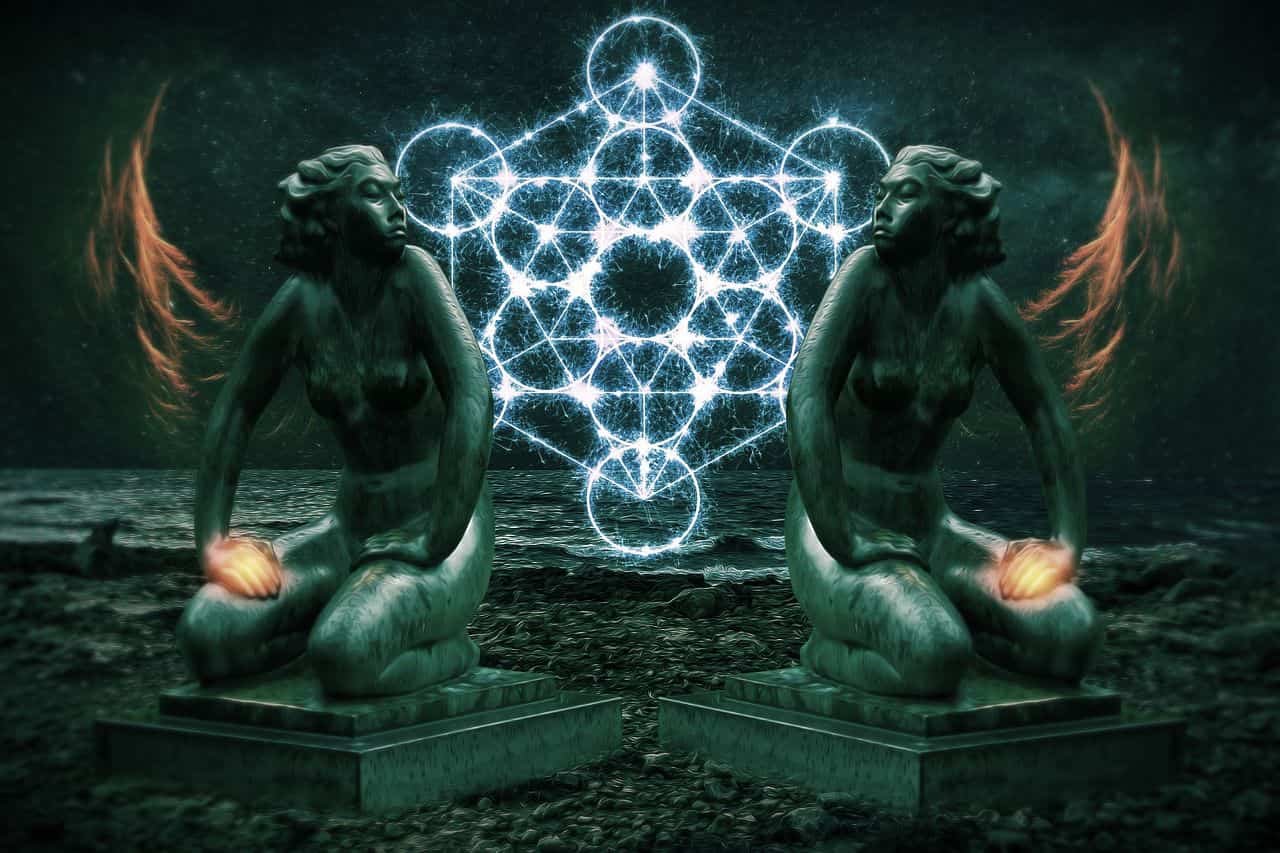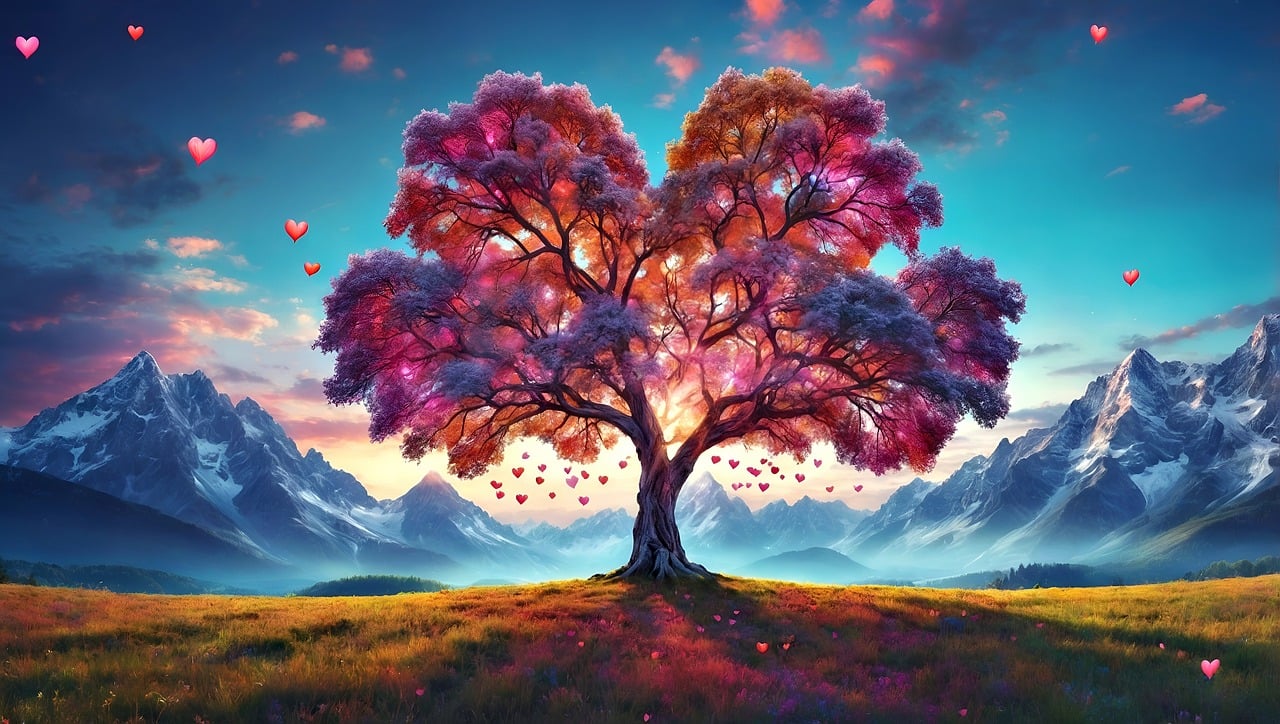The Seven Stages of Spiritual Alchemy

Hey there, amazing readers! 🖐️ Just a quick note: yes, we know there are a lot of ads here. Trust us, we get it—it’s not the prettiest look, but they help us keep this blog alive and kicking. Those pesky little ads cover the costs of all the behind-the-scenes magic, from hosting and tech stuff to creating content we hope you’ll love.
We’re committed to delivering quality posts, and your support (even just sticking around despite the ads) means everything to us. So, bear with us, and thanks for helping us keep the good vibes rolling. Now, on to the fun stuff! 😉
TRANSLATE BUTTON AT THE END OF THE ARTICLE
For millennia, alchemy has been associated with acquiring riches and immortality.
However, this idea of alchemy is mostly incorrect: it derives from conflating ancient alchemy’s metaphors with reality.
As a result, alchemy became a fake science based on the idea that lead can be turned into gold.
Alchemy is now seen as antiquated, even esoteric, a remnant of the dark times.
If you’re interested in this esoteric, old philosophy, you can find a lot of useful information.
Alchemy is not the secret science of turning base metals into gold, but rather the secret science of enlightenment and spiritual emancipation.
This is not what most people think.
What exactly is Spiritual Alchemy? (Definition)
Our gold is not common gold.
Our gold is not ordinary gold.-Alchemist remark
Alchemy, whether you think of it as a science or as a spiritual psychology tool, is all about change and transformation in the end.
While physical alchemy is concerned with changing and manipulating the qualities of matter, spiritual alchemy is concerned with releasing your spiritual being from the confines of your unpolished components (e.g., your fears, personal beliefs, self-loathing, etc.).
Spiritual alchemy is even more complex.
The goal of spiritual alchemy is to free you from your core scars, fundamental beliefs, soul loss, and other self-destructive personality traits so that you can live completely and unhindered.
This is the most exciting part of the process.
The ultimate stage of transformation—the gold—of spiritual alchemy is to exist in “pure being,” or soulful awareness.
Try to change the way you think about yourself, as well as how much you connect with others, avoid them, and identify with them
Today, we may credit C.
G.
Jung, a prominent psychiatrist, with his continuing interest in alchemy.
Many of his ideas are based on alchemy, which has a lot of symbolism.
This gives us a colorful and detailed map for how to get “out of our own way,” stop being our own enemies and let our best selves show up.
The Science of Transformation, Jung, and Symbolism

Carl Jung, a well-known Swiss psychiatrist, is often regarded as the primary champion and proponent of alchemy.
He said that many of the symbols contained in alchemy writings had magically appeared in the dreams of his patients, the majority of whom had no previous knowledge of alchemy.
He came to the conclusion that alchemy was a brilliant manifestation of universal symbols of life and, as such, a very powerful instrument for psychological understanding.
The most well-known alchemy symbols are Materia Prima, the Philosophers’ Stone, and Gold.
Materia Prima (or “initial matter”) is an alchemical symbol that represents the idea that the cosmos began as a primal, formless basis.
The concept of a “Materia Prima” may be traced back to Aristotle, who recognized that there is a force that ties all other forms of existence together but is unseen—we call it “spirit” these days.
You can’t see this womb or energy, but it is a field of pure potential that can’t live without being made into a “form.”
The “Materia Prima,” or primordial material, is that which remains after we have reduced matter to its purest form in alchemy.
This is an important psychological symbol because it shows how we get to a “core realization,” or know the source of a belief or trauma inside ourselves.
Spiritual Alchemy’s Seven Stages
Dissolve and coagulate is a Latin phrase that means “to dissolve and to coagulate.” -Alchemist’s remark
The Latin phrase “solve et coagula” is derived from “solve,” which means to separate and break down, and “coagula,” which represents the act of putting parts back together (coagulating) into a new, higher form.
Interestingly, “solve et coagula” is a brilliant psychological metaphor: by chasing gold (or following our intuition’s “higher calling”), we “break down” restricting portions of ourselves that are impeding our metamorphosis (Philosopher’s Stone) into a free and full person (coagulation).
While there aren’t any universal phases of alchemy because there are so many different schools of thought, the following are some of the most commonly agreed upon ones:
1. Calcination

Calcination is the process of heating and disintegrating raw stuff—or, in other words, dismantling portions of ourselves that are impeding our enjoyment.
We often choose to be correct or achieve a concept of “perfection” rather than be happy, so we continue to disregard self-exploration.
Calcination is the moment in our lives when we begin to dismantle our egos, self-doubt, stubbornness, self-sabotaging conduct, pride, and arrogance in order to discover what lies underneath.
2. Decomposition

Once we’ve broken down all of our personality traits that were getting in the way, we’re left with the process of disintegration, which is the start of feeling less affiliated with our false sense of self.
We may take a step back and properly notify our good and bad traits if we are free of our pride or self-doubt.
Our failure to accept responsibility for our numerous flaws, avoidance of unpleasant memories and other inner tensions rise to the surface during this stage, allowing us to become aware of how our actions may be harming others.
This is the start of the spiritual maturation and waking process.
This stage of change is often unintentionally brought about by sicknesses and catastrophes in our lives that force us to pay attention to what we’re doing, shaking us out of our avoidance tendencies (such as workaholism, drugs, and TV watching).
3. Distinction

Separation is the stage in which we define our ideas and feelings by separating them from other people’s thoughts and emotions.
A simple example is when we try to get rid of hatred in our hearts when we try to forgive someone.
The process of separation entails being really conscious of our true sentiments towards another person or ourselves.
At this stage, we choose to feel our anger, irritation, or disappointment toward another or ourselves, rather than reverting to the old habit of diligently trying to “forgive” or “forget” because it is the “proper” or “comfortable” thing to do.
Separation is inextricably linked to shadow work in that we must allow all of our emotions and ideas to arise alongside one another.
This lets us separate certain parts of our personality so that we can look at and judge them from a different angle.
4. Confluence

Following the purification and clarity of the first three steps, we must appropriately integrate the remaining parts inside ourselves through the “conjunction” process.
While the previous phase taught us to separate and identify all of our distinct sensations and ideas, the conjunction gives us the inner space—the simmering—that we need to completely and honestly embrace all of the components of our real self.
When we reach this level of spiritual alchemy, all of our unconscious ideas and emotions bubble up to the surface and into the light of conscious consciousness.
Journaling, contemplation, isolation, and meditation are very beneficial during this period.
5. Fermenting

Fermentation is the first step in our rebirth process.
This period is analogous to the death of a grape, followed by the birth of wine.
While the preceding four phases entailed dealing with components of our former personality, the fermentation stage introduces us to our more “refined” self.
Fermentation is divided into two stages: putrefaction and spiritification.
Putrefaction is the decay of our prior identities; the inner dying process that allows the old aspects of our conscious and unconscious brains to rot and decompose. (Some refer to this period as the “black night of the soul,” since it may be followed by distressing mental states such as sadness.)
Spiritization, on the other hand, is the stage at which we begin to see the world in a new way.
Spiritization entails letting go of any elements of ourselves and our lives that do not serve or help our spiritual change, with the correct direction and strong inner effort.
This is when we experience profound inner calm and serenity.
6. Distillation

Once we begin our spiritization, we must find a means to continue integrating all of these spiritual realizations into our lives so that they may become permanent.
Distillation is the next phase of purification.
Finding methods to live from a daily position of inner calm – even in the most commonplace situations – is one example of distillation.
We undergo a deep and profound inner change with enough repeated practice of continually dying and being reborn in the present moment without returning to the habits, identifications, and cycles of the mind.
In the East, this is often referred to as “enlightenment” or “self-realization.”
Mindfulness, meditation, yoga, and self-inquiry are all beneficial at this time.
7. Coagulation

Coagulation is the time when we’ve “broken open the skull,” or in other words, when we’ve enabled our awareness or soul to link with the Materia Prima: the Spirit.
It’s similar to the blood’s capacity to form clots and stop bleeding.
The moment at which two opposites, such as the spiritual self and raw matter, heaven and hell, and life and death, collide is the point at which existence becomes self-aware.
This is the point in our lives when matter becomes spirit—or spirit manifests itself in material form.
The physical cosmos is not distinct from the mental or spiritual reality at the Coagulation stage; it is a mirror of it.
***
Alchemy’s greatest achievement is the creation of interaction between thought and matter, between self and the world.
It represents and symbolizes the union of opposites, the transcendence of separation, and the oneness of all entities.
I hope this post has clarified and illuminated your knowledge of this enigmatic subject.
What do you think about spiritual alchemy?
I’d love to hear your thoughts in the comments section!

The Enlightenment Journey is a remarkable collection of writings authored by a distinguished group of experts in the fields of spirituality, new age, and esoteric knowledge.
This anthology features a diverse assembly of well-experienced authors who bring their profound insights and credible perspectives to the forefront.
Each contributor possesses a wealth of knowledge and wisdom, making them authorities in their respective domains.
Together, they offer readers a transformative journey into the realms of spiritual growth, self-discovery, and esoteric enlightenment.
The Enlightenment Journey is a testament to the collective expertise of these luminaries, providing readers with a rich tapestry of ideas and information to illuminate their spiritual path.
Our Diverse Expertise 🌟
While our primary focus is on spirituality and esotericism, we are equally passionate about exploring a wide range of other topics and niches 🌍📚. Our experienced team is dedicated to delivering high-quality, informative content across various subjects ✨.
To ensure we provide the most accurate and valuable insights, we collaborate with trusted experts in their respective domains 🧑🏫👩🏫. This allows us to offer well-rounded perspectives and knowledge to our readers.
Our blog originally focused on spirituality and metaphysics, but we’ve since expanded to cover a wide range of niches. Don’t worry—we continue to publish a lot of articles on spirituality! Frequently visit our blog to explore our diverse content and stay tuned for more insightful reads.






















